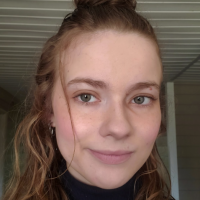
What Do We Have Where We Are Now?
by Jennifer Passios, Kyle Rucker, Sophia Green, Jordan Dozier, and Seth Abkemeier
Every day, my students walk up a hill to get to school. It’s only one hill, and the walk takes less than a minute, but that one minute is a notorious talking point. The hill is necessary. It is also in the way. Starting the day uphill can be defeating, empowering, frustrating, amusing, or simply there.
“How ya doin’?” I say to someone walking in the building.
“OMG, the HILL” they pant back.
More often, it’s better just to nod in recognition. Anyone who has walked the hill understands the effort.
We greet each day with this challenge, climbing the forsaken slope to the dance building. Our three to four year stopover, complete with beautiful studios, tech resources, and brilliant exhaustion, sits nestled (or wedged, depending how you feel) amidst a cadre of prison units and bats.
The bats fly over, and we stay for a little while.
And we stay with dreams of leaving.
Hopes of skyscrapers and small apartments loom large. The rolling countryside meets the sky at the intersection between staying still and falling in love somewhere luminous and loud. It can be easy to forget just how many dance stories start, progress, and end away from bright lights and evident next steps. I imagine there are hundreds of thousands, if not more.
Below, four dancers who attended Sam Houston State University in Huntsville, TX during the 2023-2024 school year share their experiences making a life in dance beyond city limits. Perhaps your hills look like theirs.
Small City Buckin’
by Kyle Rucker
Practicing art in a city blooming with creative energy is easy. Finding inspiration comes as often as breathing air. In Houston, TX, every corner reveals another mural painted proud on the side of a hotel building. Luxury cars steal attention by simply existing. Jazz music caresses the ears of every passerby who walks near a high-end Italian restaurant. The city is full of enchantments and persuasions that stimulate the senses and motivate the soul.
Attending university in Houston, it was hard to go hungry for amusement. The presence of “other” (different perspectives, genres, styles of art) expanded my creative mind and offered substantial artistic fuel. I truly did not understand the privilege of location until I decided to change schools. Once I moved to the small city of Huntsville, the true test of my creative limits began.
As a black and queer artist, attending a school lacking in “other” was… a choice. The amount of resources the department offered was unmatched, and the freedom to explore my creative reach was encouraged without a leash. But was that enough? The city is home to necessities like grocery stores and mechanic shops. The local Chili’s is the extent of fine dining. Everything in between is either rural homes, food for cows, or clubs for straight, country, and predominantly white students.
If the experience taught me nothing else, I learned the importance of a community composed of all. The acceptance of “other” without the presence of “other” made being “other” feel taboo. There was hardly anyone around who understood or lived my story, and traveling 30-60 miles South for a crumb of inspiration was not often feasible within the no-car, broke college student struggle.
In hindsight, the experience gave me the opportunity to develop intrinsic motivation and find inspiration in the natural elements of life. There is beauty in how the trees dance in the wind, how water flows down a hill, and how bats obsessively swarm in specific locations. Huntsville, few in “other” and artistic installations or events, gave me a deeper relationship with my own creative spirit.
Through many struggles, we can either complain or find a way. Small cities can only offer what they have. This can be a great disadvantage, or spark a wonderful creative birth.
Elusive Remedy
by Sophia Green
During a show week in my junior year, I felt a twinge in my shins. I wasn’t too worried initially. I had made a full recovery the first time I had shin splints in high school. I figured I would be back to dancing in no time. But I failed to realize two things had changed since high school: my health insurance and my location.
My new health insurance only covered care in San Antonio – four hours away from my school. I tried to get physical therapy treatment during the summer and winter breaks but was never in town long enough to see progress. School resources were unavailable to me, so the search for services in the area began.
One day, my mother called me with some help. The solution sounded almost perfect – a physical therapist in Houston who worked with dancers. Houston was 80 miles away. As an exhausted college student, I didn’t want to take the time out of my week to drive that far. Reluctantly, I took the plunge. It was the best decision I had available.
For the final seven weeks of my senior year, I spent Sunday mornings and afternoons going to my PT appointments – a cost of nearly four hours of commuting per session and a year spent searching for a provider. I slowly gained confidence and strength, and I found myself taking class without a thought of pain. I sometimes wonder, if I had been in a major city, would a solution have been more readily available? It feels absurd that I went months without remedy, continuing my routine with consistent pain. That frustration of being unable to get what I need is hard to shake. I hope for future dancers to find ease and access to resources they require, regardless of where they live.
Underground
by Jordan Dozier
Growing up near Austin provided me with a privileged and expansive experience within the dance community. I was exposed to a flood of advertisements for master classes, workshops, and auditions with ample opportunity to participate in programs such as the Austin Film Festival, Dance To Breathe, and Soul 2 Sole. I knew which up-and-coming names to follow if I wanted a challenge in tap or jazz, and who would provide film time for classes in hip hop and jazz funk. Flyers covered community boards in coffee shops and schools, extending invites to more events following classes and shows. Dance was always talked about in Austin, and people in the surrounding cities were involved, so I never had to worry about lengthy travels.
This ease of access changed when I moved to Huntsville for college. While I have access to regular training at the university, there is little connection to Houston, the nearest metropolitan area. Houston’s dance scene is more underground than the one in Austin with less advertisement and an increased reliance on personal connections to uncover good classes and programs.
My first two years in Huntsville left me feeling isolated as I had yet to discover more opportunities to dance and watch dance despite attempting to ask my peers. I thankfully found the right people and learned about organizations like Dance Source Houston, an artist service organization that helps dancers advertise for shows, find auditions, network with one another, and learn about administrative support. Unfortunately, this knowledge took a long time to find and I was underwhelmed by the inaccesibility of this information in comparison to what I grew up with.
I'm immensely grateful for the opportunities that are becoming more available. Those such as Sam's dance program and the Barefoot Ballroom, which is gaining more attention as a resource for dancers in the area for classes, rehearsals, and performances.
As a community, we need more time to develop these connections and resources. I wait in excitement for the time when dancers are aware of each others’ resources and opportunities throughout all of Houston and its surrounding cities. No one left without knowledge due to a lack of connection.
From The House on the Hill
By Seth Abkemeier
There is a stillness in the small town I grew up in. It’s nestled along the gentle Cedar River and sprawls up a bowl of slight hills that surround the riverbank. My parents’ home sits on top of one of these hills, with a view that stretches to the KwikTrip gas station that never ID’s minors. On summer nights, with the fireflies swarming the sloping hill, it can almost feel like a city skyline if you squint hard enough. Believe me, I’ve tried.
My home perched atop my small town was where I formed a diverse round of dreams: from wanting to be a biochemical engineer to an English teacher, a pianist, politician, artist, and even a lawyer. The last dream I formed was to dance, like the principal dancers from the Minnesota Ballet I saw perform the Nutcracker when I was ten. Despite this newfound passion, the daunting reality of rigorous training set in, and by sixteen, I felt I had missed the opportunity for a professional ballet career.
That dream was magical, but unreachable from my house on the hill.
And it was far too gay.
My hometown isn't brazenly homophobic. Instead it simmers in the hushed gossip of church social hours and the bustle of local dive bars.
A boy dancing professionally?
It’s obviously because of his disposition.
He’s a faggot.
By the time I had fallen in love with dance, I was indifferent, but I could still feel the sting and pressure of my gay presence in a small town.
Today, as I gaze at New York City's genuine skyline, no longer needing to squint, I reflect on my journey. Surrounded by younger dancers with greater experience, my ego stings with comparison. I ponder what could have been if someone had scaled the hill, reached my home, and whisked me away to the big city when I was little. What if they had shown me the endless opportunities. I could be a biochemist, I could be a pianist, I could be anything, including a gay man that happens to love dance– possibilities that once seemed far beyond the KwikTrip gas station.
What Do We Have Where We Are Now? is the third installment in a multi-part series exploring the ability to access dance outside of major metropolitan areas. You can read Part 1: Out of Range and Part 2: Crazy Wood and Bare Feet on our website.
By Jennifer Passios
July 11, 2024











